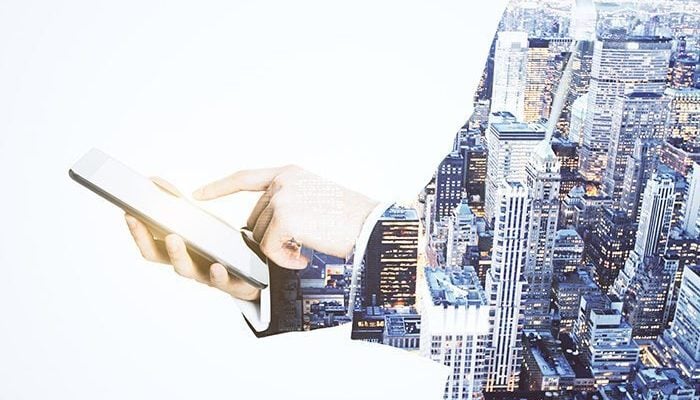Augmented Knowledge: Combining Knowledge Management with Augmented Reality and People...
Nov 14, 2018 • Features • Augmented Reality • Future of FIeld Service • Knowledge Management • Nick Frank • Remote Assistance • field service • field service management • field service technology • Service Management • Si2 partners • Field Technologies • Peter Maier • Managing the Mobile Workforce
We've been asking for some time now how Augmented Reality will fill its potential as a central fulcrum within the future of field service. For Nick Frank the key is for it AR to become entwined with Knowledge Management...
The English philosopher Francis Bacon once said: “Knowledge is power,” In earlier times, knowledge was usually kept to oneself for personal gain. Today, it is the sharing of knowledge that leads companies to success, especially in times of increasing digitization.
This ‘sharing’ involves collecting data, transforming it into insight and then getting it to a place where people can use it to make a difference. Benefits are only seen when the ‘knowledge chain’ is completed and any break in the chain nullifies our efforts.
So when industry commentators tell you that a particular technology is the “silver bullet” to success, it really is an oversimplification!
The problem is that knowledge is often “hidden” in the various IT systems and applications, or lost in the heads of employees who leave the business. For field service, this problem is particularly severe as the service portfolio is significantly larger than the current product offers due to longer product lifecycles and ever faster new product introductions.
On the other hand, service knowledge must be immediately available, in a distributed fashion, to achieve quick solutions and to ensure customer satisfaction. For service, we should view the challenge as being to provide customers or field technicians with that extra piece of know how that will help them solve problems more efficiently. A kind of “Augmented Knowledge” for expand it and provide it in a targeted manner. Existing information stored in different systems is merged. This can be structured data such as parts lists and unstructured information such as service tickets or service reports.
"Unstructured knowledge – text or prose – is analysed using text mining tools and integrated with the structured data. Large amounts of data can then be digitised and used intelligently..."
Unstructured knowledge – text or prose – is analysed using text mining tools and integrated with the structured data. Large amounts of data can then be digitised and used intelligently.
Urgently needed information is provided easily and quickly. Being able to network across databases makes it possible to recognize contexts, to analyze causes of failures and to create transparency. By using the system and verifying or excluding results, users continuously enrich it with expert knowledge. The current problem may already be the solution for the next user.
A classic example is finding similar cases (or problems). If an engineer is looking for the cause of a failure, the system looks for similar case and offers potential solutions.
The source for this could be the targeted evaluation of completed service cases (e.g. service tickets). By analysing which solutions were chosen by the engineer, the associated repair instructions, and confirming them as successful (or not successful, as the case may be) after the repair – the system learns through this interaction.
In fact, this process can go further and develop new insights from existing information. By visualizing and recognizing patterns, correlations can be identified, and appropriate measures initiated. For example, as part of a maintenance action or repair, the system can recommend the maintenance or repair of other elements to avoid subsequent failures that have arisen in similar situations.
But how to get that information to the point of need?
Augmented Reality (AR) technology, with its capability to supplement a real object, such as a machine or a component, with additional digital content is an ideal tool for this. It is not just the traditional approach of an expert communicating with a technician, it is extending it to ‘’smart’ databases supplying answers to questions.
"There is much to learn about the ergonomics of Augmented Knowledge and how to integrate it into people’s working lives..."
For example, in addition to the live video image on a tablet, smartphone or smart glasses, information and instructions can be augmented to the display to help solve the problem. These may be created by an expert remotely or they may be rendered as step by step instructions by the knowledge management system.
The individual steps necessary to solve the problem are now available in the form of AR annotations and can be subsequently edited and saved. This is another advantage of the AR system: The repair process gets documented and can be used again for similar cases.
So, if the engineer encounters this problem again in the future, they can reuse the annotations of the first repair without having to consult the expert. In addition, the solution is also available to all other engineers.
This saves significant time and effort. The caveat is to be able to present information to users such that they can use it. There is much to learn about the ergonomics of Augmented Knowledge and how to integrate it into people’s working lives.
This is a good example of how by turning information into transportable and analysable data (some call this digitisation of their processes), it is possible to accelerate service delivery, saving time and money for both the service provider and the user of machines.
Our experience is that by breaking down Knowledge Management and Augmented Reality into smaller pilot projects, we learn how to provide Augmented Knowledge to the Technician. Not just the technology, but actually how people brains cope with having access to this additional insight.
This may seem as bit ScFi and daunting at first, but you would be surprised how much of this you already do. Our advice is don’t look to anyone technology being pushed at you as the unique solution to your problems. You must develop your Knowledge Management, Augmented Reality and People capability in parallel.
For more information on how to start this digital journey, you can contact authors at peter.maier@si2partners.com or nick.frank@si2partners.com
Nick Frank, Managing Partner at Si2 Partners
Be social and share...





















 Field Service News is published by 1927 Media Ltd, an independent publisher whose sole focus is on the field service sector. As such our entire resources are focused on helping drive the field service sector forwards and aiming to best serve our industry through honest, incisive and innovative media coverage of the global field service sector.
Field Service News is published by 1927 Media Ltd, an independent publisher whose sole focus is on the field service sector. As such our entire resources are focused on helping drive the field service sector forwards and aiming to best serve our industry through honest, incisive and innovative media coverage of the global field service sector.
Leave a Reply